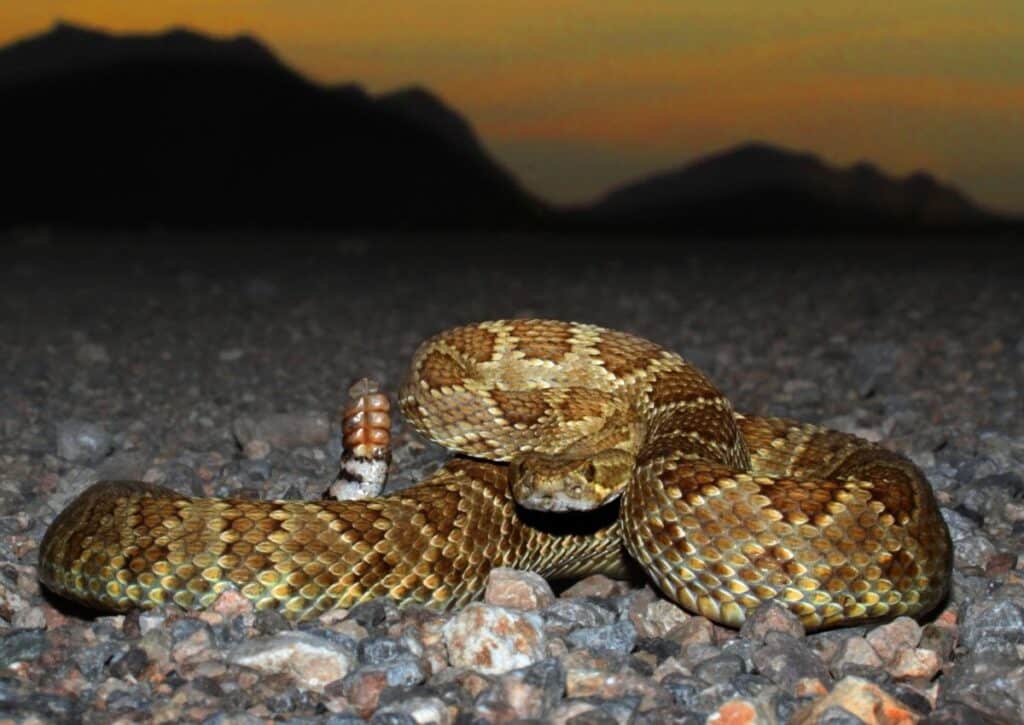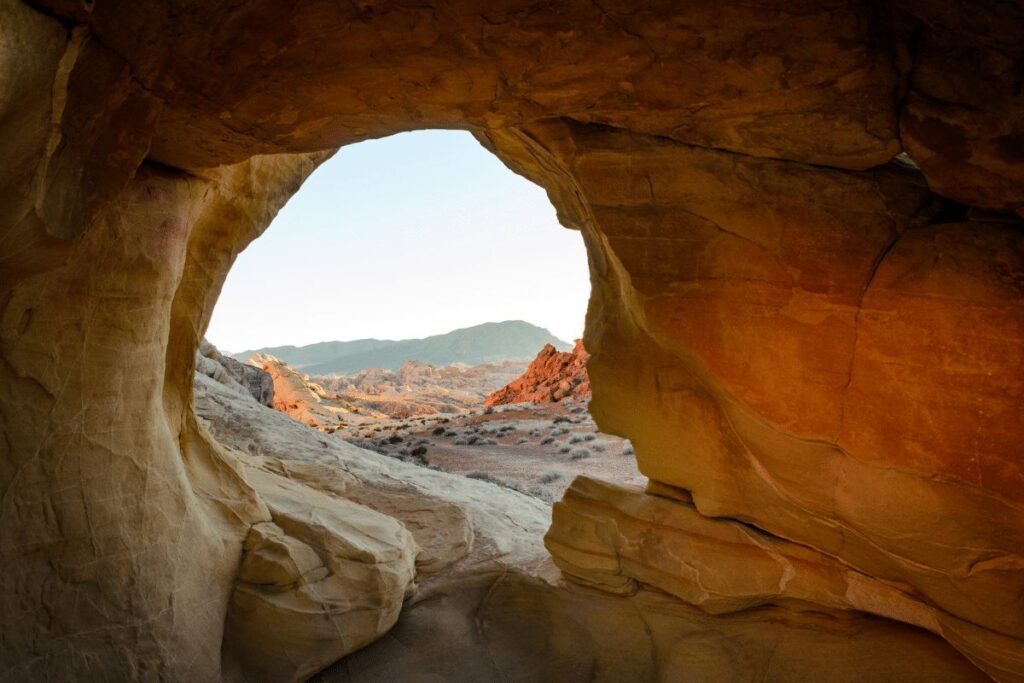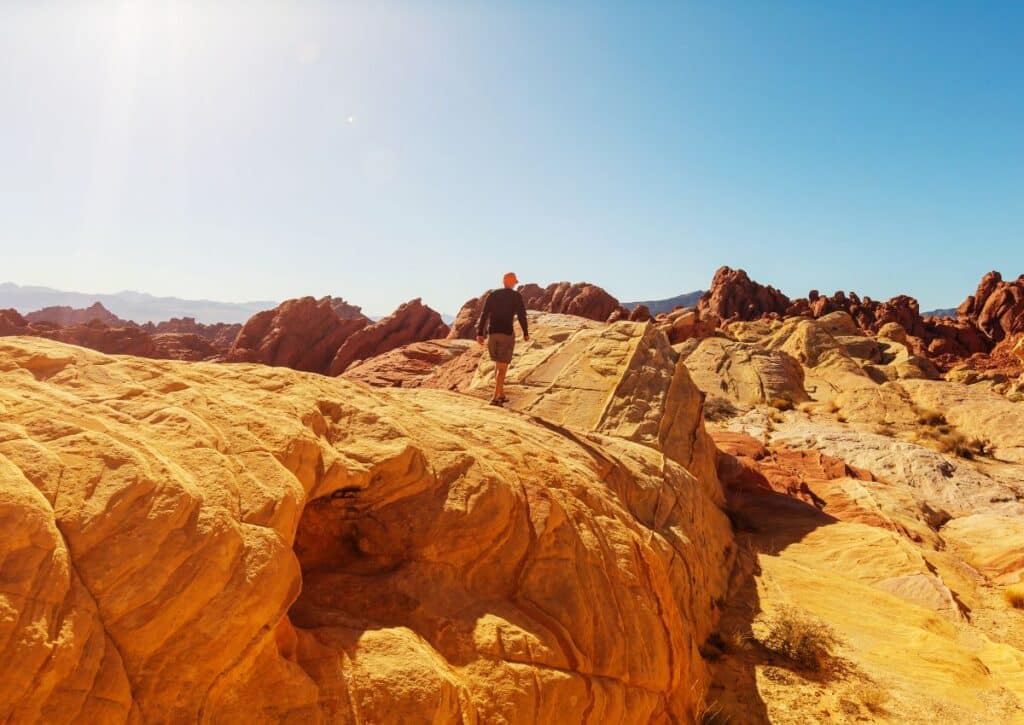Spot 5 snakes in The Valley of Fire State Park as we recount thrilling hiking experiences amidst its stunning terrains.
Hiking through the Valley of Fire State Park is a journey punctuated by nature’s surprises. On our various treks, we’ve come face to face with the park’s serpentine residents, encountering five specific snake species that have left indelible impressions on us.
This article chronicles our close encounters with the diamondback rattlesnake, Mojave rattlesnake, Great Basin gopher snake, coachwhip snake, and desert kingsnake.
Each sighting added depth to our adventures, weaving tales of nature’s marvels into our trail memories. Join us as we recount the moments these snakes crossed our paths amidst the majestic landscapes of the Valley of Fire.
5 Species of Snakes We Could Identify
The Diamondback Rattlesnake, with its iconic patterned scales and menacing rattle, is a prominent figure in this arid ecosystem. Though its venom is potent, this snake prefers to avoid confrontation, using its rattle to warn intruders before considering a strike.
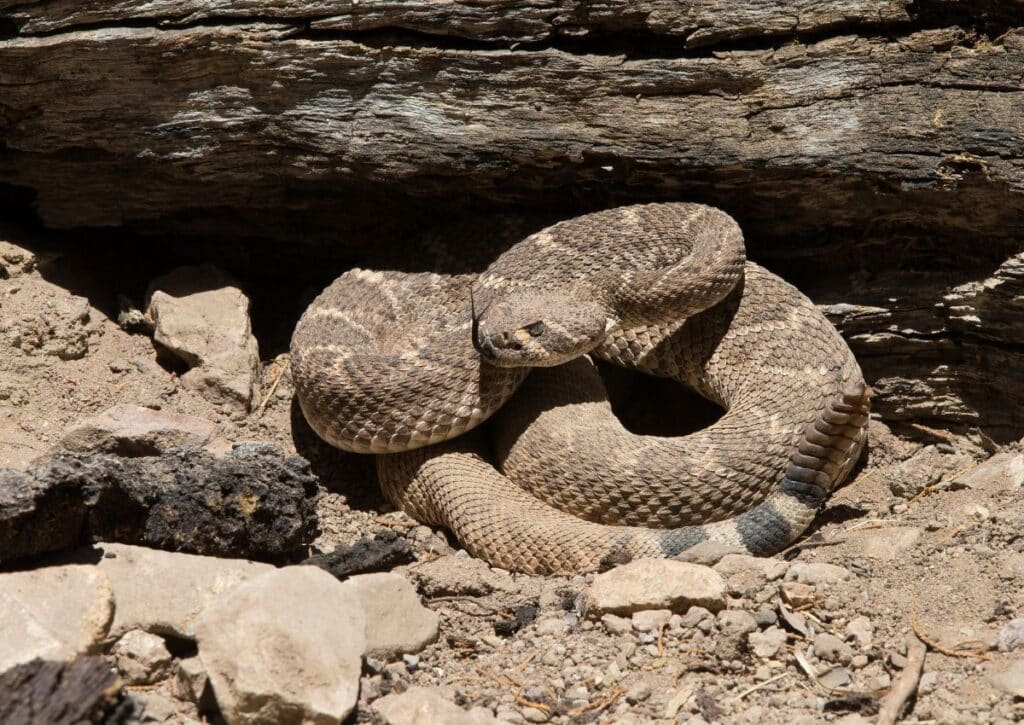
Its presence is pivotal in maintaining the balance of the local food web, primarily by controlling rodent populations.
Similarly, the Mojave Rattlesnake, a relative of the Diamondback, calls the Valley of Fire home. It is distinguishable by its more toxic venom and slightly smaller size, yet shares the same preference for solitude and non-aggression. Encounters with this snake are rare but demand respect and caution.
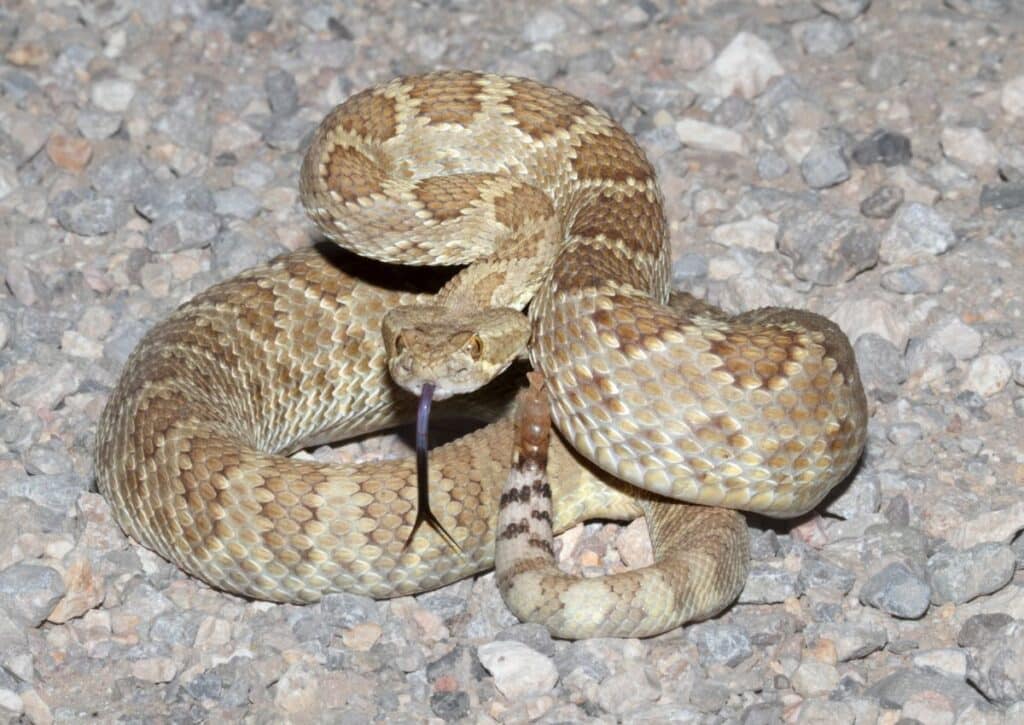
On the non-venomous end of the spectrum, the Great Basin Gopher Snake plays a significant role in the ecosystem. Mimicking rattlesnakes as a defense mechanism, it is often mistaken for its venomous counterparts.
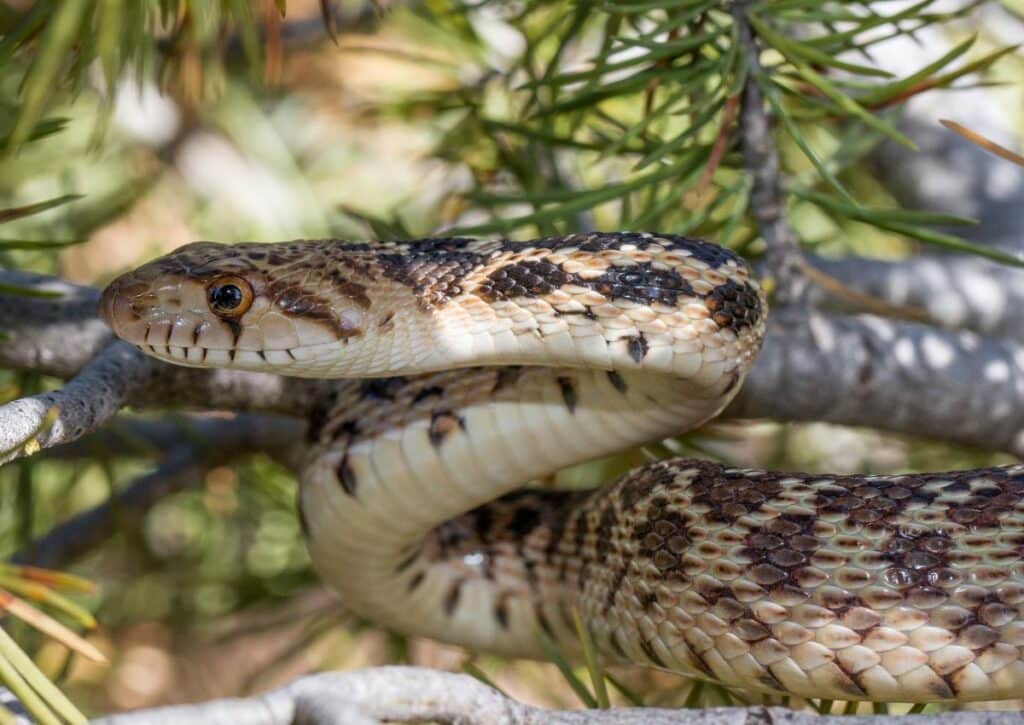
Despite its harmless nature, it is an efficient predator, preying on small mammals and contributing to ecological balance.
The Coachwhip Snake, known for its speed and slender build, is another fascinating resident. It actively pursues prey during the day, showcasing a behavior quite distinct from other snakes in the region.
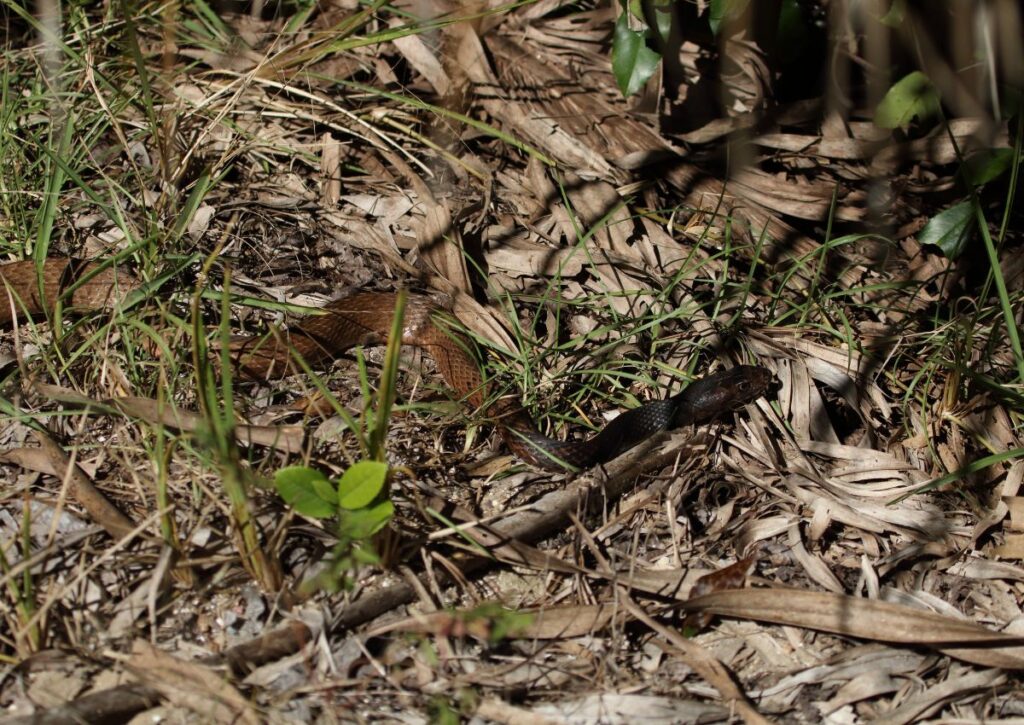
Lastly, the Desert Kingsnake, a constrictor, adds to the diversity of the Valley of Fire’s snake population. Known for preying on other snakes, including venomous species, it plays a unique role in the local food chain.
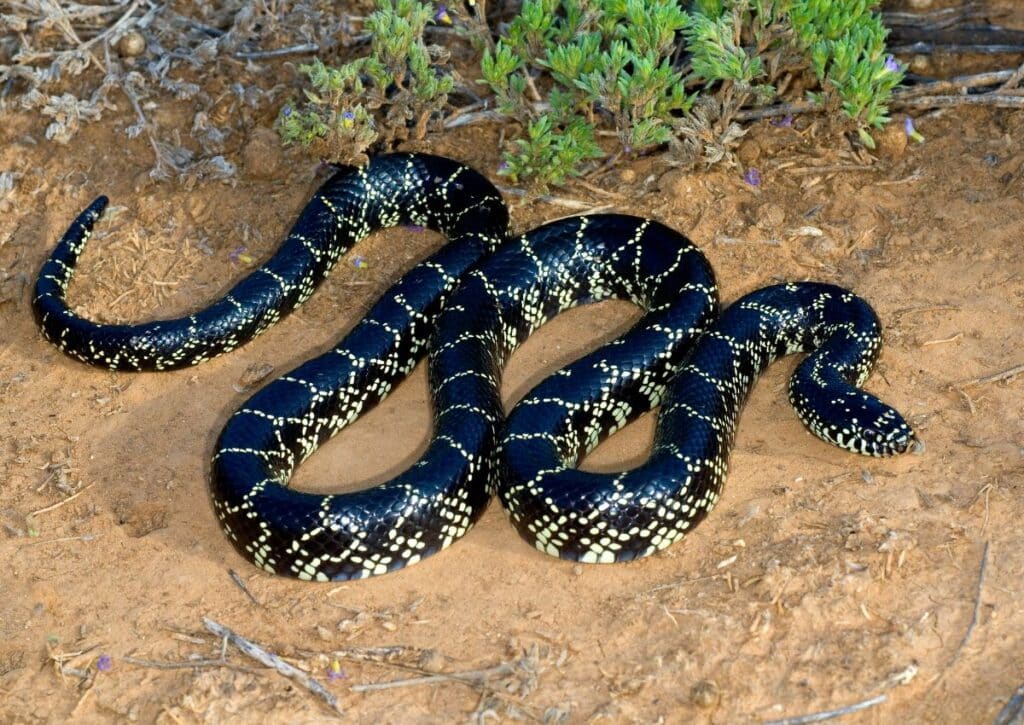
Together, these five species encapsulate the remarkable adaptability and diversity of snakes within the Valley of Fire, each contributing in its way to the complex web of life in this captivating desert landscape.
Habitat & Behavior:
The Valley of Fire’s rugged desert offers various terrains, and the resident snakes have developed behaviors to survive:
- Ambush Hunting: Many snakes remain stationary, using their surroundings as perfect camouflage. They wait patiently for prey, striking when the moment is right.
- Thermal Regulation: The desert’s extreme temperatures have led snakes to evolve behaviors like basking to warm up and seeking shelter to cool down.
Identifying Snakes:
Safety is paramount when encountering snakes:
- Head Shape: Triangular heads usually denote venomous species, while round heads are more typical of non-venomous ones.
- Other Features: Visible venom glands, fangs, and specific color patterns can hint at a snake’s venomous nature.
Trails & Common Sightings
The Valley of Fire’s trails are where most visitors get a chance to spot these reptiles:
- Fire Wave Trail: Spanning about 1.5 miles round trip, this trail boasts stunning sandstone formations. However, it’s also a hotspot for snakes, especially in shaded crevices and under rocks.
- White Domes Trail: A slightly longer 1.25-mile loop, this trail takes visitors through diverse landscapes, from slot canyons to historic movie sites. The varied terrain is attractive to different snake species, making sightings frequent.
Snake Hotspots in the Valley of Fire:
Beyond the trails, there are specific areas where snakes are more commonly found:
- Silica Dome: The undulating landscapes and occasional water sources make this area popular for snakes. At roughly 2 miles, the Silica Dome trail requires careful treading, especially during warmer months.
- Arch Rock Campground: Snakes are often spotted near campsites, especially during the night when they come out to hunt or warm themselves on the heated ground.
10 Tips for Hiking with Snakes in the Valley of Fire State Park
- Stay Informed: Before embarking on any trail, familiarize yourself with the snake species native to the Valley of Fire. Recognizing the difference between venomous and non-venomous snakes can help you respond appropriately during an encounter.
- Stick to Designated Trails: While it might be tempting to venture off the path, snakes often inhabit the underbrush and crevices. Staying on marked trails reduces the likelihood of surprising or stepping on one.
- Wear Appropriate Footwear: High-ankled hiking boots provide an added layer of protection against snake bites. They also offer better grip and support on uneven terrains.
- Avoid Tall Grasses: Tall grasses can obscure snakes and make them hard to spot. When possible, walk around areas with dense underbrush or tall grass, especially if there’s no clear path through.
- Hike During Cooler Hours: Snakes are ectothermic, which means they are more active during warmer parts of the day. Opt for early morning or late afternoon hikes when snakes are less active.
- Use Trekking Poles: These poles not only assist in hiking but can be used to rustle the grass or brush ahead, giving any hidden snakes a warning of your approach.
- Be Cautious Near Rocks and Water: Snakes might bask on sunlit rocks or be near water sources to hydrate or hunt. Approach these areas with caution, giving a wide berth whenever possible.
- Avoid Touching or Disturbing: If you encounter a snake, maintain a safe distance. Never attempt to touch, provoke, or move it. Respect their space as you are in their habitat.
- Stay Calm During Encounters: If you stumble upon a snake, stop and slowly back away until you’re at a safe distance. Most snakes prefer to avoid confrontations and will retreat if given the chance.
- Be Prepared: In the unlikely event of a snakebite, have a basic first aid kit on hand and know the nearest medical facility. Do not attempt to suck out the venom or apply a tourniquet. Instead, keep the bitten limb immobilized at heart level and seek medical attention immediately.
Remember, snakes are an essential part of the Valley of Fire’s ecosystem. By respecting their habitat and following these tips, you can ensure a safe and enjoyable hiking experience for both you and the serpents that call this place home.
Conclusion
Hiking in the Valley of Fire State Park is a journey through nature’s exquisite canvas, where the vibrancy of the landscape meets the intrigue of its inhabitants.
Among these are the five remarkable snake species we’ve encountered: the diamondback rattlesnake, Mojave rattlesnake, Great Basin gopher snake, coachwhip snake, and desert kingsnake.
Each snake, with its distinct characteristics and behaviors, adds to the mystique of the park. Their presence reminds us of the delicate balance of life in this harsh environment and the importance of coexistence.
As hikers and nature enthusiasts, it is our responsibility to tread lightly, respect their space, and appreciate the role they play in this vibrant ecosystem.
With every trail we explore and every snake we sight, we are gifted with a deeper connection to the natural wonders of the Valley of Fire.

